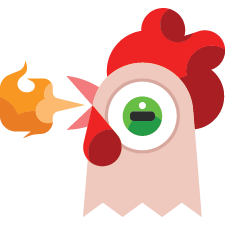Install Steam
login
|
language
简体中文 (Simplified Chinese)
繁體中文 (Traditional Chinese)
日本語 (Japanese)
한국어 (Korean)
ไทย (Thai)
Български (Bulgarian)
Čeština (Czech)
Dansk (Danish)
Deutsch (German)
Español - España (Spanish - Spain)
Español - Latinoamérica (Spanish - Latin America)
Ελληνικά (Greek)
Français (French)
Italiano (Italian)
Bahasa Indonesia (Indonesian)
Magyar (Hungarian)
Nederlands (Dutch)
Norsk (Norwegian)
Polski (Polish)
Português (Portuguese - Portugal)
Português - Brasil (Portuguese - Brazil)
Română (Romanian)
Русский (Russian)
Suomi (Finnish)
Svenska (Swedish)
Türkçe (Turkish)
Tiếng Việt (Vietnamese)
Українська (Ukrainian)
Report a translation problem

























These layouts are fine when you're using huts and potatoes, but once you move to better houses and foods you run into trouble. Consider the layout with 3 huts and 2 fields. With huts and potatoes, that's housing for 10 peeps plus food and drink for 12 peeps, so you're ahead. When you move to veggies and tea, you have housing for the same 10 peeps but food and drink for only 4.8 peeps (with one veggie field and one tea field). Upgrading to houses makes it worse, with housing for 16 peeps but only supporting 4.8 of them. Without school micromanagement, they'll go hungry!
A diamond of 4 houses accommodates 24 peeps, but you'd need 10 fields to feed them veggies and tea. I think the goal, then, should be to maximize field production while minimizing additional housing. Basically, use houses like the author of this guide uses wells.
At least, that's what I think.
In response to the comment below from @Carminis:
You are completely neglecting the per-peep efficiency here.
Let's take the 4 field 1 well setup as an example. 4 fields at 110% vs 5 fields at 100% means going from 4.4x to 5x for an increase of 13.6% but you're using 25% more peeps to do that.
Taking the 'triangle' with 2 fields and a well, you'd be going from 2.4x to 3.2x or 33% increase in production in exchange for 50% more peeps.
Fewer peeps working is less housing, less food, fewer clothes, and possibly a lower tier of expectation, which can mean yet another bonus to productivity from higher average happiness. Fewer clothes also means fewer peeps needed in the clothes production chain, which means less food for those peeps and so on.
It's not a simple "more food production is better" situation unless you're already over 240 peeps.
Reason: A well takes up one tile. It buffs production of 2-4 buildings by 10%. So you make a net gain of 20%-40%, and one well. Thing is, you don't need many wells. 4 are usually enough to satisfy cleaners and all of the population even in late-lategame. So, instead of having a tile that is 120% productive, you have a tile that is only 20% productive, since all that water is redundant.
The actual best layout doesn't work around wells. Its just houses and fields, and wells are placed strategically, to have very short ways for the peeps when they need water, so you build them right next to a bunch of houses, desirably, also satisfying a cleaner if necessary. You also forget to mention some other good patterns.